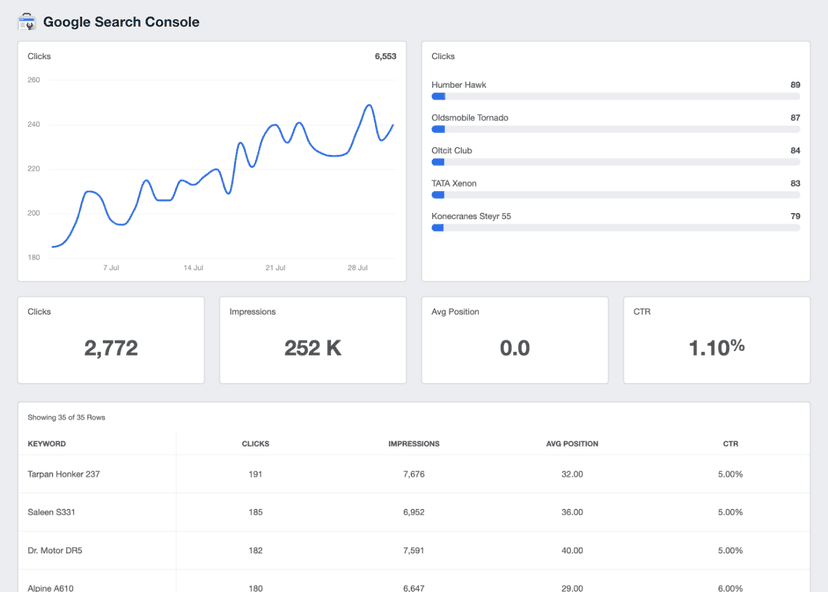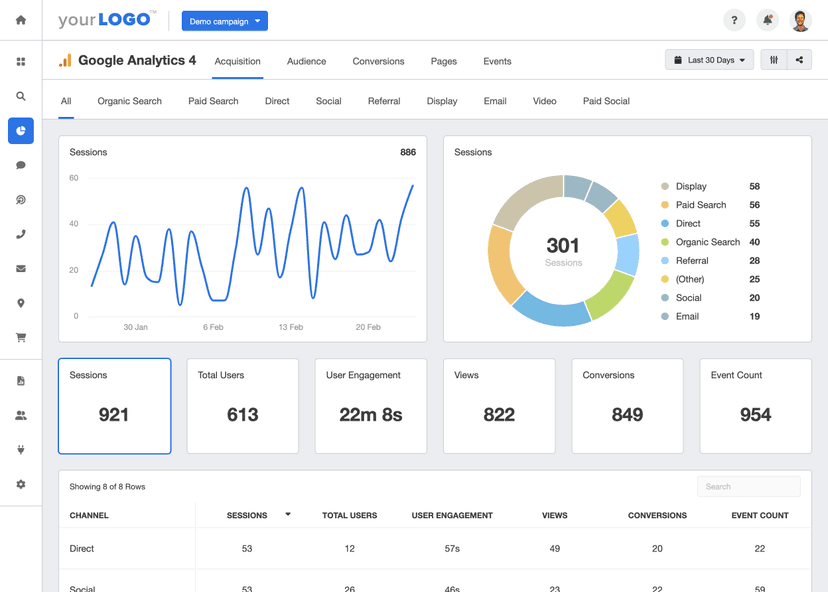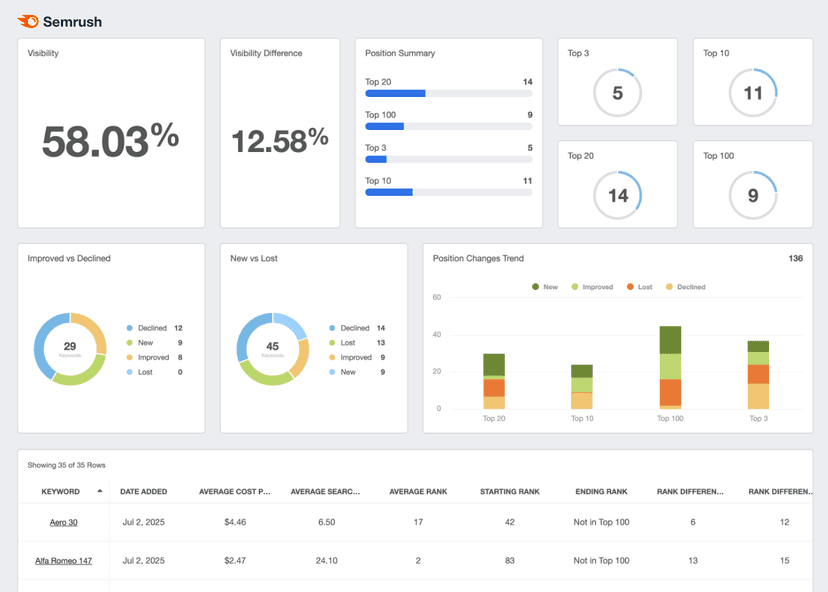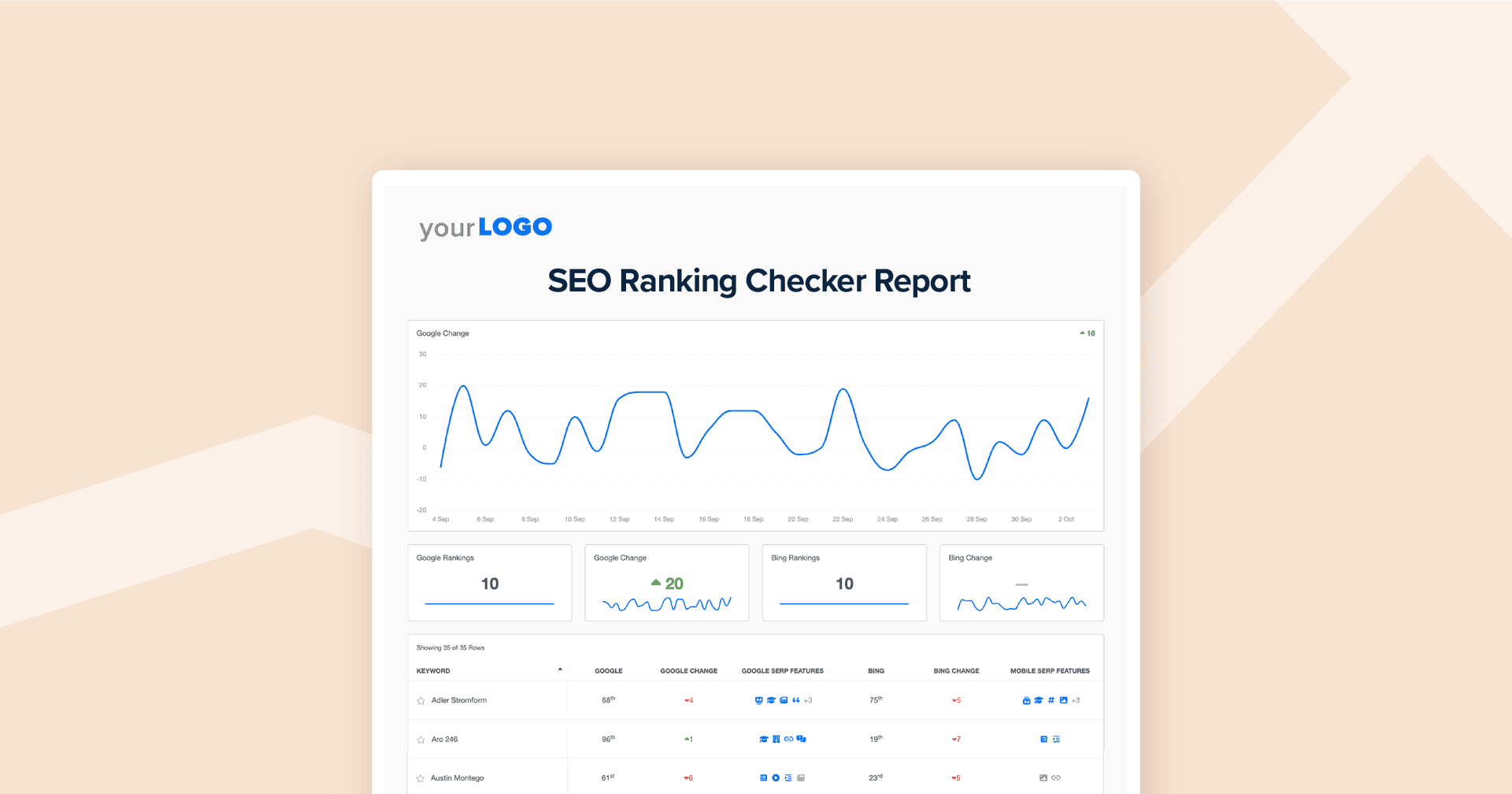Featured Snippets
Keyword Focus
Use snippet data to target keywords with high snippet potential.
Content Strategy
Tailor content formats to align with search queries, snippet styles, and intent.
Rank Tracking
Track snippet rankings regularly with a featured snippet tracker.
Client Reporting
Showcase snippets in client reports to highlight campaign value and visibility.
Why Featured Snippets Matter in SEO
Google's featured snippets hold a prime position on search results pages, often appearing above traditional organic listings. These featured snippets aim to respond directly to user queries, driving increased visibility and clicks for a site. Tracking featured snippet opportunities allows marketers to capture this valuable real estate on SERPs, ensuring the content meets users' search intent quickly and effectively.
Understanding how a site ranks within SERP features like when specific queries trigger featured snippets, also brings insights into audience needs and preferences. By monitoring and optimizing for these snippets, marketers boost traffic, enhance brand authority, and create content that stands out on search pages.
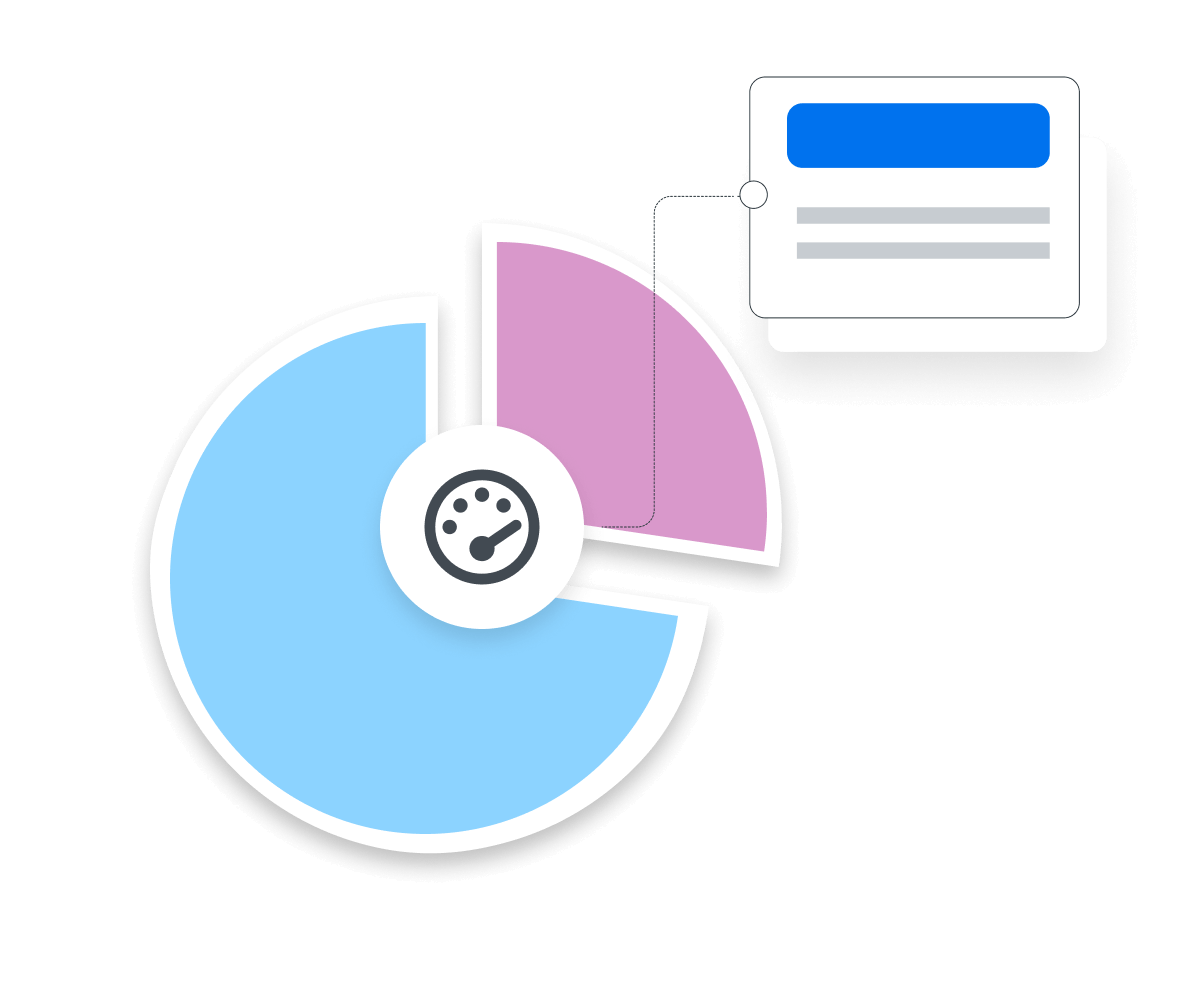
Stop Wasting Time on Manual Reports... Get SEO Insights Faster With AgencyAnalytics
How Featured Snippets Relate to Other SEO KPIs
Featured snippets influence organic search performance by capturing top positions in Google’s search results, driving more clicks and engagement. When content earns a featured snippet, it often pulls traffic that would typically go to the first or second-ranked organic listings, which can improve overall visibility and lower bounce rates. Tracking these snippets alongside organic positions helps marketers understand how shifts in one metric impact others.
Featured snippets also relate closely to KPIs like click-through rate (CTR) and average session duration. More clicks from snippet visibility can signal increased relevance, while a rise in session duration may indicate strong alignment with search intent. Together, these metrics provide a comprehensive view of how effectively a campaign meets and engages its audience.
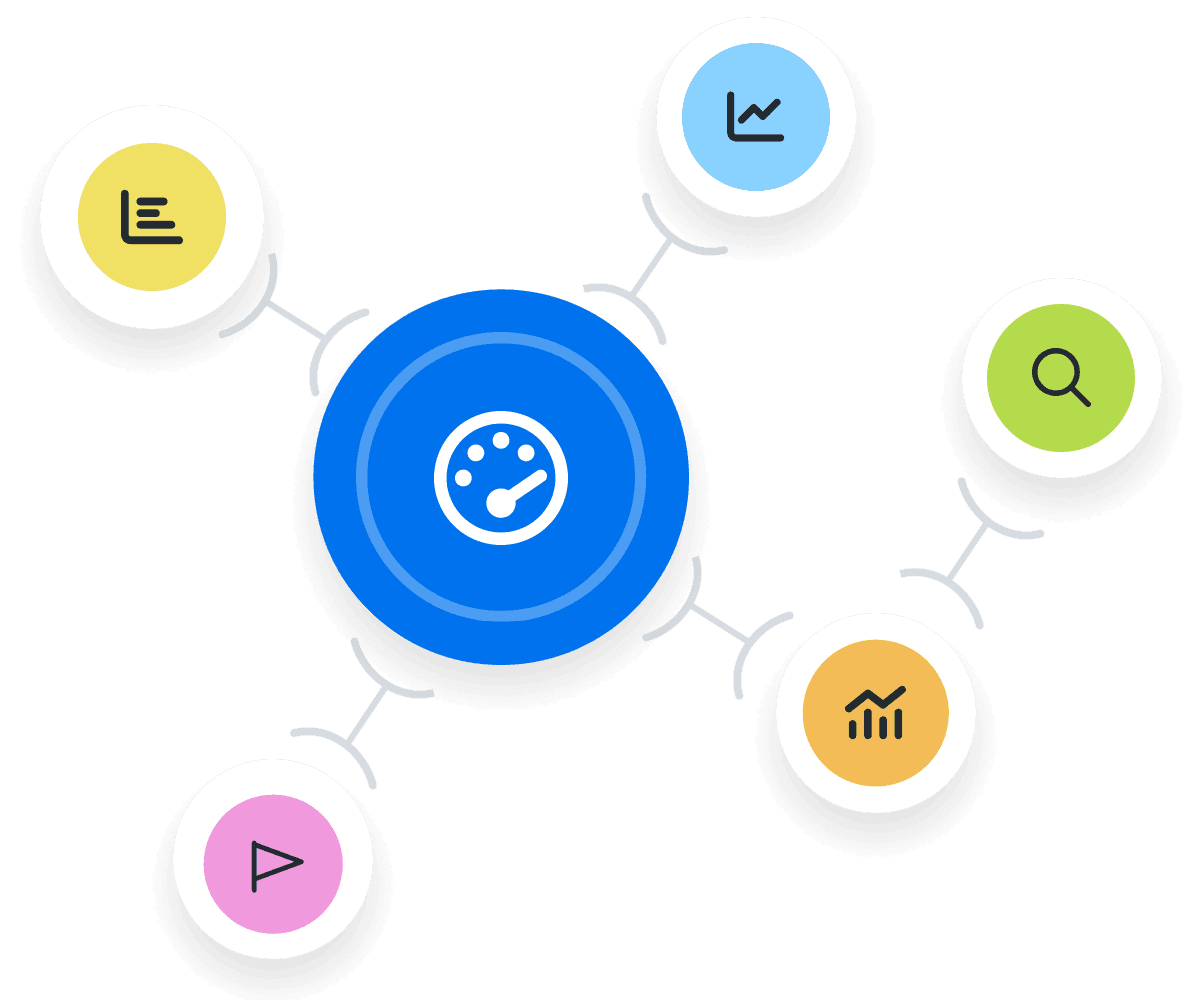
Key Factors that Impact Featured Snippets
Content relevance, structure, and authority play significant roles in winning featured snippets. Google prioritizes clear, well-organized answers that directly address user queries, so creating concise, fact-based content with headings, lists, and tables can improve visibility in snippet spots. Structuring information to match popular snippet formats—like paragraphs, numbered lists, and tables—enhances the chances of ranking.
Page authority and domain trust also impact snippet success. High-quality backlinks and strong domain authority signal credibility, increasing the likelihood that Google will select the content for snippets. Additionally, content freshness matters; updating posts to align with current trends and language can help maintain and improve snippet placements over time.
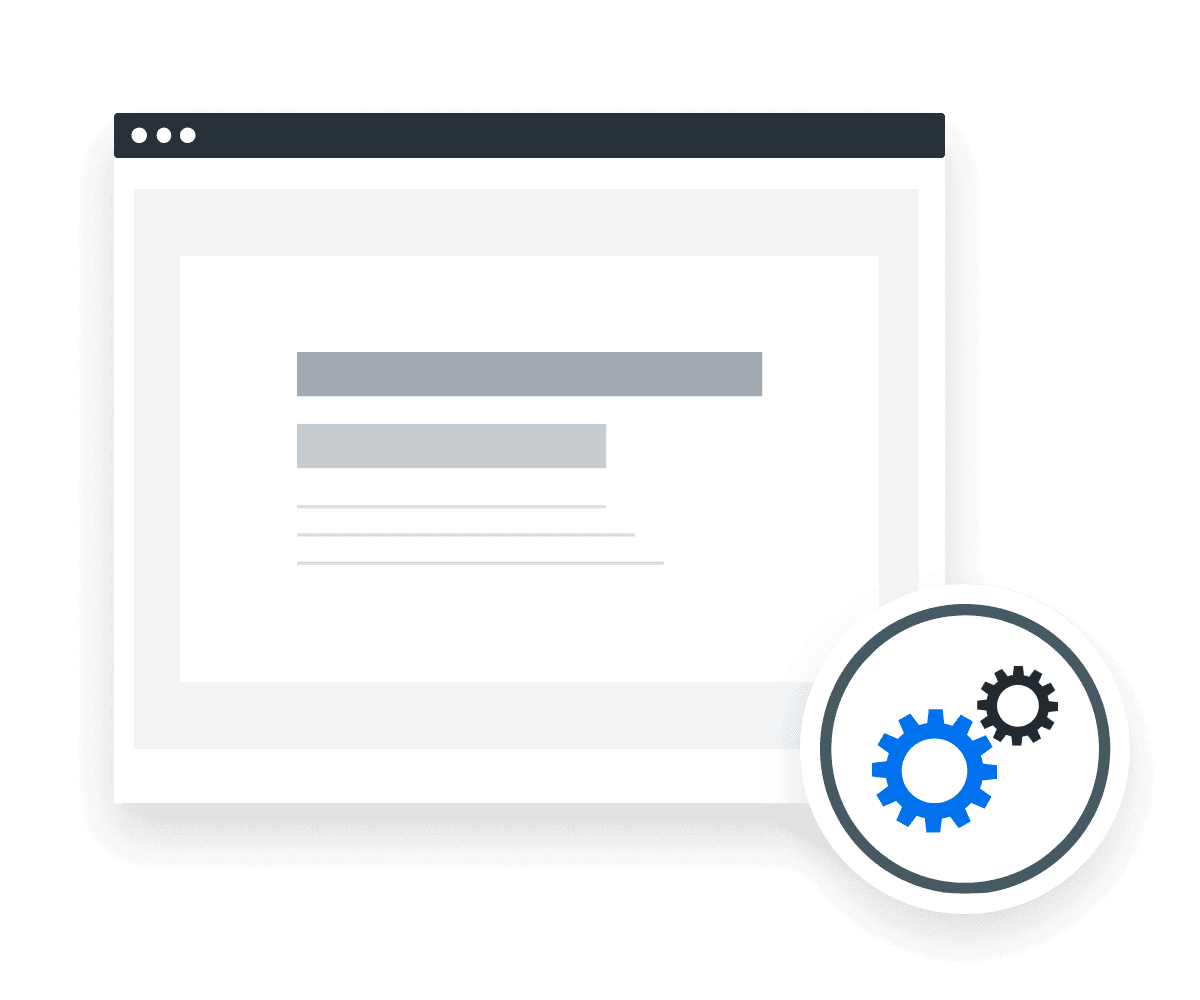
How to Track Featured Snippets
Tracking featured snippets is simple with a keyword ranking tool that monitors snippet positions alongside organic rankings. This tool reveals which keywords secure snippet spots, helping marketers identify content that performs well and uncover featured snippet opportunities. Regularly checking snippet rankings highlights shifts or new opportunities to optimize content, ensuring it stays competitive on Google’s search results.
Despite what the name suggests, Google Search Console doesn’t do a great job of tracking featured snippets in Google Search. At least not in a way that is client-friendly. While it does provide valuable data on rankings, impressions, and rich results, featured snippets are distinct from rich results like product snippets and job listings.
That’s where a featured snippet tracker becomes essential, as it specifically identifies whether a keyword ranks for a specific snippet position and includes that data alongside organic ranking positions for the key term.
Types of Featured Snippets in Google Search Results
Featured snippets in Google’s search results come in four main formats: a paragraph snippet, list snippet, table snippet, or video snippet. Paragraph snippets display concise text answers to questions, often pulled from content with clear, direct responses. List snippets, either ordered or unordered, are commonly used for “how-to” queries, offering step-by-step instructions or top recommendations.
Table featured snippets showcase data in an easy-to-read format, often for comparisons or statistics, allowing users to quickly digest structured information. Video snippets, typically sourced from YouTube, appear when video content best answers a query.
It's also good to think outside of the featured snippets box. People Also Ask boxes provide related questions and answers, helping users explore further topics. Sitelinks offer quick navigation to specific sections of a website within the search result, improving usability. Review snippets display ratings and feedback for products or services, adding credibility and influencing click-through rates. Optimizing for all these rich results, including featured snippets, can significantly boost visibility and better align content with user intent on search pages.
Why Featured Snippets Matters to Clients
Featured snippets matter to clients because they provide instant visibility at the top of Google’s search results, even above traditional rankings. A good featured snippet places a brand front and center for high-interest queries, meaning clients gain more exposure without needing to secure the top organic spot. This added visibility increases clicks, enhances credibility, and often drives valuable traffic—all while making clients appear as thought leaders in their industry.
A featured snippet report shows clients the direct impact of these prime placements, helping them see the value of SEO efforts beyond standard rankings. Clients consider featured snippets important as they align with their goals of staying competitive, reaching more customers, and capturing quick wins in search visibility.
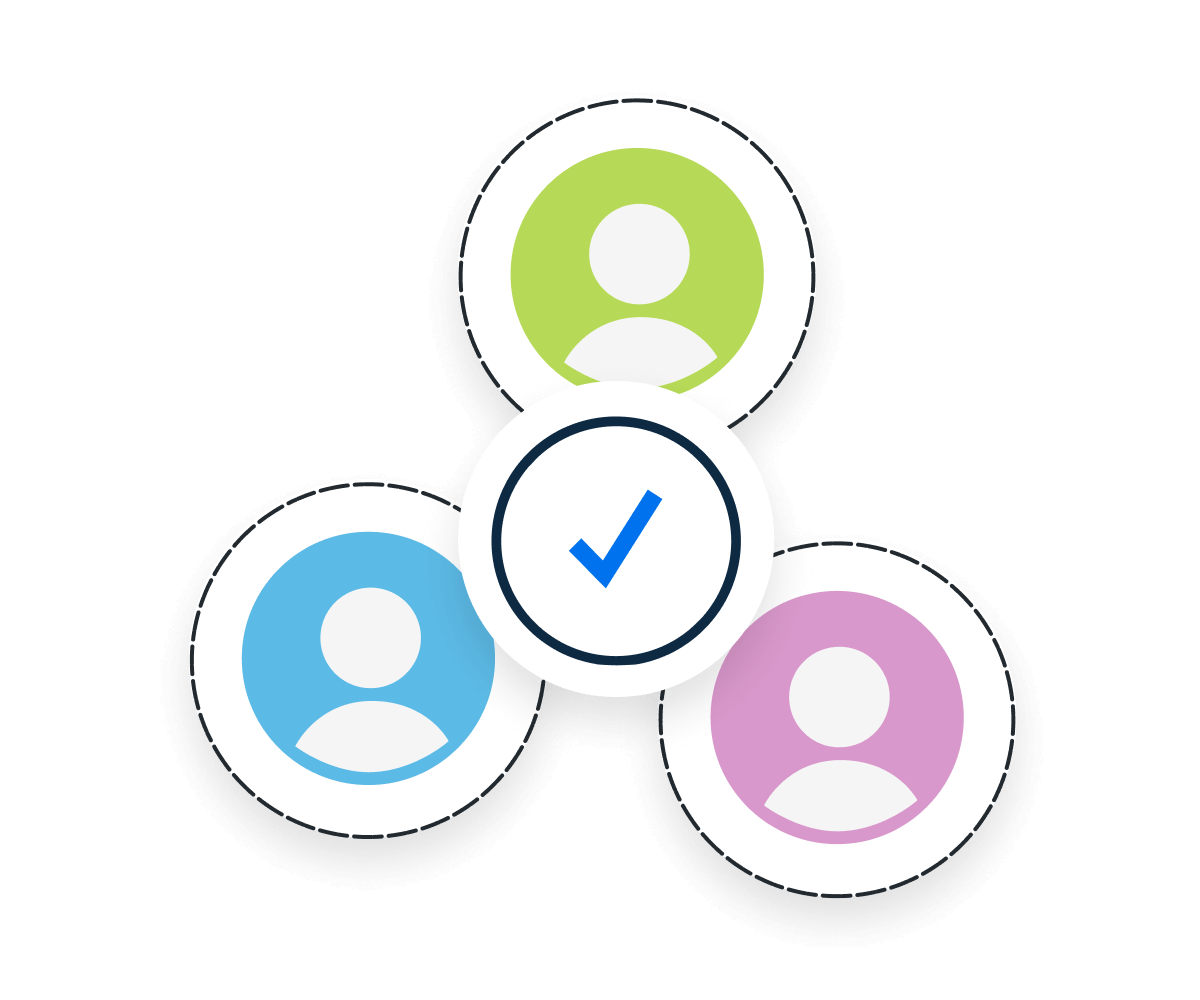
Why Featured Snippets Matters to Agencies
For agencies, featured snippets offer a unique SEO strategy to deliver quick, high-visibility results. When agencies find featured snippets and optimize content to capture them, they secure valuable positions for their clients that can even outperform traditional rankings. Snippets provide a fast way to demonstrate impact in competitive spaces, especially when standard organic keywords report challenging results due to high competition.
Agencies also look to gain an edge by analyzing other featured snippets within the client’s industry. By understanding which snippets competitors hold, agencies can adjust content strategies to target openings and reinforce the client’s authority in the field. With snippets adding measurable value, they become an essential KPI that showcases the agency’s ability to innovate and deliver results in a way that stands out from conventional SEO tactics.

Save Time and Streamline Your Agency’s SEO Reporting
Best Practices When Analyzing and Reporting on Featured Snippets
Conducting a thorough analysis of featured snippets sets a strong foundation for effective SEO and advertising campaigns. By examining snippets from multiple angles—such as search volume, keyword relevance, and position stability—marketers gain insights into content strategies that work. This analysis reveals how featured snippets drive visibility and engagement, making it easier to prioritize high-impact keywords and optimize for prime SERP placements.
Monitor SERP Dynamics
Regularly check SERP changes to keep featured snippet strategies fresh. Google’s search results shift often, so monitoring these dynamics helps quickly adjust strategies to maintain prime snippet spots and stay ahead of competitors.
Ensure Data Accuracy
Accurate tracking of featured snippets is essential. Check the featured snippets tracker regularly to keep insights current and reduce errors. Using reliable keyword research tools ensures data reflects actual search positions, providing clients with precise, trustworthy information.
Provide Context
Featured snippets become more valuable when viewed within a full SEO strategy. Show how snippets add to organic search results by capturing high-competition traffic and enhancing brand authority, making the case for snippets as a key part of the broader performance plan.
Visualize Performance
Data visualizations clarify wins in featured snippets. The use of simple icons make it easier to track changes in snippet positions and their traffic impact. Visuals also reveal the effect snippets have on search volume and engagement, making insights clearer for clients.
Align with Client Goals
Tie featured snippets directly to client goals like visibility and lead generation. Focus on snippet wins that support these objectives, connecting SEO performance with real business outcomes to reinforce the value of snippets.
Provide Actionable Steps
Offer clear steps to improve or retain featured snippet positions. Recommend specific optimizations, like structured lists or content updates for trending keywords. Actionable advice shows a proactive approach to tracking and enhancing snippet performance.
Featured Snippet Tracker Template
Related Integrations
Three Ways to Boost Featured Snippet Visibility
Securing the most featured snippets requires optimizing content to deliver concise, direct answers that match user intent. Here are three effective strategies to increase your chances of capturing and retaining these valuable SERP positions.
Optimize for Common Queries
Identify popular questions that align with your target keywords and provide clear, direct answers. Using a Q&A format increases the likelihood of Google selecting your content as a featured snippet, especially for “how-to” and “what is” queries that often drive snippet results.
Use Structured Content
Google favors structured content that’s easy to read. Organize information using lists, tables, and bullet points to meet Google’s snippet formats. Structured data improves scan-ability, making it easier for search engines to understand and potentially showcase your content as a snippet.
Keep Content Concise
Google often pulls concise snippets that answer questions quickly. Keep answers short and to the point, ideally under 50 words. Crafting clear, authoritative answers improves your chances of capturing snippets, as Google prefers straightforward responses for optimal user experience.
Related Blog Posts
See how 7,000+ marketing agencies help clients win
Free 14-day trial. No credit card required.


